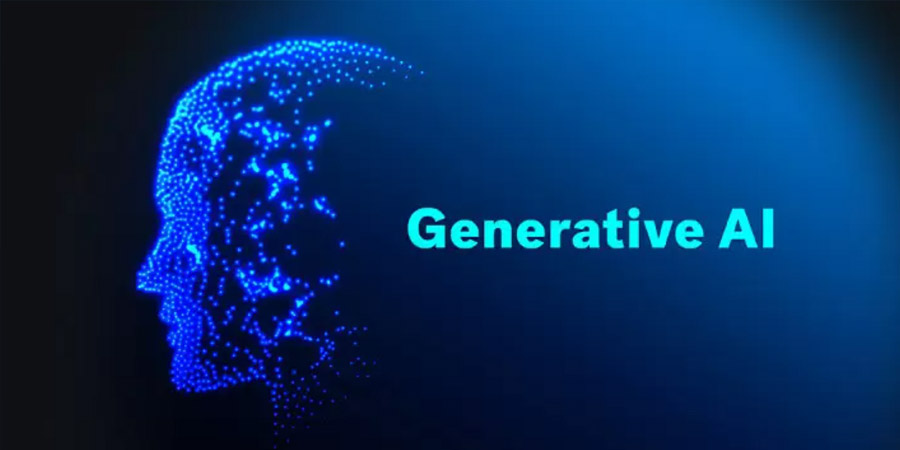The Asia Pacific is currently witnessing an unprecedented surge in generative AI (GenAI) adoption, which is poised to propel its technological landscape into a new branch of innovation and efficiency.
According to the IDC's latest Worldwide AI and Generative AI Spending Guide, spending on GenAI, encompassing software, services, and hardware for AI-centric systems, is projected to skyrocket to USD 26 billion by 2027, with an impressive compound annual growth rate (CAGR) of 95.4% from 2022 to 2027. This surge underscores the region's role in driving the next wave of AI advancement and technological metamorphosis.
GenAI is known to empower computers to generate new content based on existing data—be it text, audio, video, images, or code—in response to prompts. The IDC predicts that GenAI will serve as a catalyst for transitioning into a new phase of automation, enhancing productivity across generic tasks, business-specific functions, and industry-specific applications.
Innovation and Growth Across Sectors
Central to the Asia Pacific's transformative journey is strong digital infrastructure and substantial investments in technology, positioning the region as a global leader in AI innovation. Strategic investments in GenAI-related hardware, software, and services are crucial drivers fueling this progress. From software development to customer service, GenAI is advancing industries, ushering in unprecedented levels of innovation across various sectors.
In the financial services sector, GenAI adoption is projected to reach USD 4.3 billion by 2027, boasting a remarkable CAGR of 96.7%. Financial institutions harness GenAI internally to optimize operations, automate tasks like fraud detection, and streamline complex document creation. GenAI-powered solutions offer personalized financial services, enhancing customer engagement and adapting dynamically to different client needs, while boosting profitability through cost reduction and revenue generation.
Telecom Review Asia Exclusive Interview: Transforming the Telco Industry: Emerging Trends with GenAI
The software and information services industry stands as the second-largest adopter of GenAI, leveraging its versatility across marketing, data analytics, and software development. In marketing, GenAI streamlines content creation for digital platforms, optimizing strategies and enhancing audience engagement. In data analytics, it enriches datasets and improves model performance, while in software development, it accelerates coding tasks and prototype generation, enhancing productivity and efficiency.
Governments across the Asia Pacific are the third-largest adopters of GenAI, and have highlighted the technology’s significant potential to enhance operational efficiency, transparency, and citizen engagement. These governments are pioneering education and training initiatives in GenAI, fostering new job opportunities and nurturing innovation hubs for future AI professionals.
GenAI in Telecommunications
In telecommunications, the integration of GenAI alongside machine learning (ML) is poised to deliver important advancements and changes. This technological synergy promises to revolutionize how mobile networks are orchestrated and managed, marking a significant departure from traditional approaches by introducing automation into intricate decision-making processes.
At the core of this transformation lies GenAI’s ability to optimize resource allocation within telecom networks. By leveraging advanced algorithms and predictive analytics, telecom operators can now preemptively anticipate network demands, allocate resources efficiently, and ensure seamless service delivery. This proactive approach not only enhances network performance but also enhances user experiences to different levels of reliability and speed.
The impact of GenAI extends beyond operational efficiencies. It encompasses a broad spectrum of applications, including enhancing customer interactions through AI-driven personalized services. Furthermore, GenAI bolsters network security by continuously monitoring and adapting to emerging cyber threats, safeguarding data integrity and user privacy.
Latest Technology News: SoftBank Successfully Trials Nullforming Technology in Japan
Asia-Pacific telcos are actively implementing GenAI solutions to enhance various aspects of their operations and services.
SoftBank Corp. is transforming its customer support system with GenAI, aiming to improve customer interactions and service efficiency.
HCLTech is making significant strides with GenAI by upgrading its digital experience solutions and introducing HCLTech AI Force, a state-of-the-art GenAI platform designed to accelerate time-to-value and improve the efficiency of software development and engineering operations. Additionally, HCLTech is collaborating with SAP to drive GenAI adoption and develop innovative solutions.
In Malaysia, AWS and CelcomDigi are jointly developing GenAI solutions to advance the region's technological capabilities. Moreover, Netcracker is broadening its partnership with Microsoft to integrate GenAI technology, further enhancing its service offerings.
Additionally, Indosat and Google Cloud are collaborating to deliver AI-driven digital experiences in Indonesia.
The Infocomm Media Development Authority (IMDA) of Singapore is also embracing GenAI. As highlighted by Leong Der Yao, Assistant Chief Executive of the Sectoral Transformation Group, local Singaporean retail garden center (Far East Flora) has progressively deployed a comprehensive suite of integrated GenAI solutions. These include a point-of-sale (POS) system, a self-checkout kiosk, a mobile app, a scan-and-go app, an e-commerce platform, a CRM membership loyalty and reward system, and an inventory and fulfillment management system that integrates with its existing ERP Oracle NetSuite system.
Furthermore, Bharti Airtel has partnered with Google Cloud to deliver AI solutions to businesses, aiming to leverage GenAI for enhancing business processes and customer experiences.
Telecom Review Asia Exclusive Interview: Highlights from NEC Headquarters: What's Ahead for Telecom and Advanced Technology
Conclusion
As telecom operators embrace GenAI, they are not merely adopting a new technology but forging a path towards innovation and adaptability. This allows operators to stay ahead in a fiercely competitive path by anticipating market trends and customer needs with agility and precision.
The convergence of GenAI and ML in telecom represents more than just a technical change; it marks a strategic shift towards sustainable growth and enhanced service delivery. As we navigate this transformative journey, the boundaries of what is achievable in telecommunications are being redefined, promising a future where connectivity is smarter, faster, and more responsive than ever before.
As such, GenAI in telecom not only encompasses improving networks; it also includes reshaping the very fabric of how we connect and communicate in the digital age.
Telecom Review Asia Exclusive Coverage: Digital Battlefront: AI at Mobile World Congress Shanghai
Interesting Read: Why Labeling AI-Generated Content is a Must






